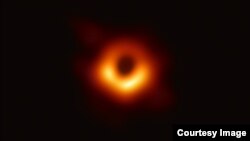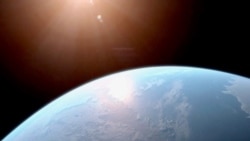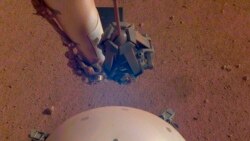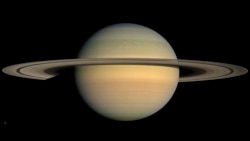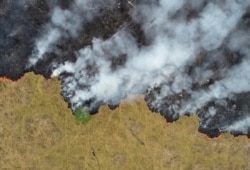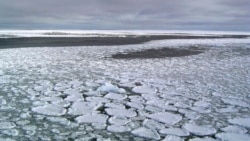2019 was a big year for major space discoveries and events related to worldwide climate change. Here is a look back at some of the most popular science stories we covered in 2019.
Black hole image
An international team of astronomers announced it had successfully captured the first image of a black hole. The picture shows the black hole having a dark center, encircled by a bright orange and yellow ring spreading outward.
Scientists say they produced the image from data collected from eight radio telescopes positioned around the world. The equipment centered on the galaxy called Messier 87. It is about 55 million light years away from Earth, meaning it takes light from the galaxy 55 million years to reach our planet. The effort involved years of international research aimed at exploring “the most extreme objects in the Universe.”
Super-Earth discovery
NASA researchers said a spacecraft discovered the first nearby “super-Earth” planet that could possibly support life. A super-Earth is a planet outside our solar system with a mass that can be between one and 10 times that of Earth.
The Transiting Exoplanet Survey Satellite, or TESS, spacecraft was launched in 2018 to look for planets outside our solar system. TESS was designed to expand upon the work of earlier exoplanet discoveries made with telescopes. More than 3,500 new exoplanets have been discovered over the past 20 years.
‘Marsquake’ recorded
NASA announced that equipment aboard its Mars lander had picked up what scientists believe was the first “marsquake” ever recorded.
The seismic signal was measured and recorded by NASA’s InSight lander, which touched down on Mars in November 2018. Scientists say the recorded activity was comparable to a 2.5-strong earthquake on our own planet. Such a small earthquake would likely not even be felt on Earth’s surface.
Saturn the ‘moon king’
The planet Saturn was recognized as the “moon king” of our solar system. U.S. scientists announced the discovery of 20 new moons around Saturn, giving it a total of 82. Jupiter used to hold the record for most moons orbiting around it, with 79.
Researchers made the discovery using the powerful Subaru telescope in Hawaii. They gathered information over a period of several years.
Asteroid exercise
NASA teamed up with the U.S. Federal Emergency Management Agency, FEMA, and international experts to study the possibility of an asteroid, or other near-Earth objects, hitting Earth. At a conference near Washington, D.C., scientists simulated a made-up asteroid to explore how to defend against a real-life hit.
UN climate warning
A United Nations scientific report warned that human-caused climate change is greatly reducing land quality worldwide. The U.N. Intergovernmental Panel on Climate Change warned that the way humans use land is causing the Earth’s atmosphere to warm faster and could harm food production.
It noted that the effects of climate change have already made food more costly and less nutritious and are worsening food shortages. The report also called for urgent measures to limit carbon emissions to protect existing land and fight the amount of worldwide food waste.
Antarctica ice drop
Scientists reported the amount of sea ice around Antarctica has decreased from a record high to a record low in only a few years. The amount of Antarctic sea ice reached a record high in 2014. But a study of data gathered by NASA showed that three years later, the average amount of sea ice had reached its lowest level.
Experts say they are not sure exactly what caused the loss of ice. It could be a natural change, or a result of rising world temperatures caused by human activity.
Recyclable plastic discovery
A team of researchers working at the U.S. Department of Energy announced it had created a kind of plastic that could lead to products that are 100 percent recyclable. The material is a plastic polymer called polydiketoenamine, or PDK.
The team reports that the material can be broken down at the molecular level. It can then be built up again to form plastics of different shapes, textures, colors and more. The researchers say this process can be repeated over and over again without the plastic material losing any performance or quality.
I’m Bryan Lynn.
Bryan Lynn wrote this story for VOA Learning English. Mario Ritter, Jr. was the editor.
We want to hear from you. Write to us in the Comments section, and visit our Facebook page.
________________________________________________________________
Words in This Story
seismic – adj. related to or caused by an earthquake
emission – n. the act of releasing something
simulate – v. create something that behaves or looks like something real but is not
polymer – n. a natural or artificial substance made from many smaller molecules
texture – n. the way something feels when you touch it



